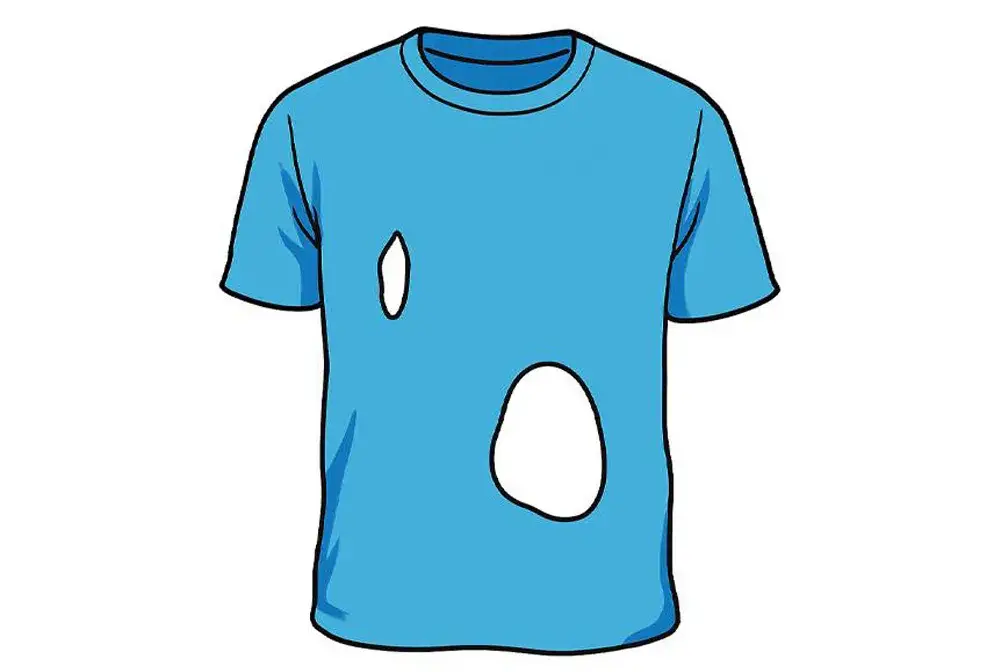The Viral T-Shirt Puzzle That’s Confusing the Internet: How Many Holes Do You See?
The internet has a way of turning the simplest images into full-blown debates. Over the years, we’ve seen viral puzzles ranging from “the dress” (was it blue and black or white and gold?) to optical illusions that make us question our own eyesight. The latest challenge driving social media users into heated discussions is a deceptively ordinary photograph of a plain white t-shirt.
The task seems simple enough: How many holes are in this t-shirt?
At first glance, most people assume it’s just a trick question. But the more you look at it, the less obvious the answer becomes. What looks like a straightforward counting exercise quickly turns into a brain-bending puzzle.
Why This T-Shirt Puzzle Went Viral
This image first started circulating online because of its deceptive simplicity. It doesn’t involve complicated math or obscure knowledge—just a picture of a shirt. Yet thousands of people across platforms like Facebook, Instagram, TikTok, and Reddit found themselves second-guessing their instincts.
Some counted two holes, others six, and still others went as high as ten or twelve. The diversity of answers proved one thing: even the most ordinary objects can become confusing when our perception and logic collide.
Take the Challenge Yourself
Before we break down the correct answer, pause for a moment. Look at the shirt carefully and try to count the holes yourself.
Think about what defines a “hole.” Do normal openings in clothing count? What about tears in fabric? Should the front and back be counted separately?
Write down your answer—or better yet, ask a friend to try it too. The fun lies not only in getting it right but in comparing thought processes with others.
The Official Answer: Eight Holes
The correct answer is eight holes in total. Here’s the breakdown step by step:
-
Two holes for the arms – one opening on each side where sleeves are attached.
-
One hole for the head – the circular opening at the top of the shirt.
-
One hole at the bottom – the wide opening where the shirt falls over the torso.
-
Four holes in the fabric itself – two visible tears on the front of the shirt, and two directly aligned on the back.
When you add them together:
2 (sleeves) + 1 (neck) + 1 (bottom) + 4 (tears front and back) = 8 total holes.
Why It’s So Tricky
The puzzle works because it blends visual perception with logical reasoning. Our brains tend to make shortcuts when looking at familiar objects. A t-shirt, for example, is so ordinary that we don’t usually think of its normal openings (neck, sleeves, bottom) as “holes.”
At the same time, when we see tears or cutouts, we instinctively count what’s visible from the front. But logically, a hole in fabric goes all the way through, just like a hole in a piece of paper. If you can see a tear on the front, there’s a matching hole on the back. That detail is what causes so many people to miscount.
The Psychology Behind Optical Illusions and Puzzles
This t-shirt brain teaser is more than just a viral distraction—it highlights how the brain processes information. Psychologists call this selective perception: the mind focuses on certain details while ignoring others.
-
Familiarity Bias – We overlook obvious answers because we’re too familiar with the object. For example, not counting the neckline as a “hole.”
-
Visual Shortcuts – Our brains rely on speed rather than accuracy when identifying shapes. We assume what we see on the surface is all there is.
-
Cognitive Dissonance – When we realize our first answer might be wrong, we begin overthinking, which often leads to even more errors.
This is the same phenomenon behind viral illusions like “the spinning dancer” or the color-changing dress. The mind tries to simplify what it sees, but sometimes reality requires more careful thought.
Why Puzzles Like This Go Viral
There’s a reason simple visual puzzles capture so much attention online. They combine entertainment, social interaction, and a sense of challenge.
-
Easy to Try: No special knowledge needed—anyone can participate.
-
Easy to Share: Friends and family love comparing answers.
-
Emotional Hook: People feel surprised when they get it wrong and proud when they get it right.
-
Engagement Driver: Comments sections fill up with debates, guesses, and playful arguments.
For social media, these qualities make puzzles like the t-shirt challenge perfect viral content.
Common Mistakes People Make
-
Only counting visible tears – Some people say four holes, ignoring sleeves and neckline.
-
Counting both sides separately – Others mistakenly double-count every tear, reaching totals like twelve.
-
Forgetting the bottom opening – The torso opening at the base of the shirt is often overlooked.
The trick is to define what qualifies as a “hole” and then apply consistent logic.
Did You Get It Right?
If you came up with eight, congratulations—you have sharp observation skills. If you didn’t, don’t worry. Most people don’t get it right on the first attempt, which is why this puzzle spread so quickly online.
The key takeaway is not just the answer but the process of thinking differently. These kinds of challenges remind us that even everyday objects can reveal hidden complexity if we look at them from a fresh perspective.
Share the Challenge
The real fun of this puzzle comes from sharing it with others. Show the image to friends, family, or coworkers and see what they come up with. You’ll be surprised at how varied the answers are and how passionately people defend their reasoning.
Start with this simple question: “How many holes do you see in this t-shirt?” Then sit back and watch the debate unfold.
Final Thoughts
At first glance, the viral t-shirt puzzle seems like child’s play. But as millions of people have discovered, counting holes isn’t as straightforward as it sounds. By blending logic with perception, the puzzle tricks the brain into second-guessing itself.
The correct answer is eight—but the real value lies in the conversation, laughter, and curiosity it inspires. In a digital age overflowing with information, sometimes the simplest images are the ones that make us slow down, look closer, and think harder.
So the next time you spot bleach-like patches on your laundry or question how many openings a shirt has, remember this viral challenge. Because sometimes, the smallest details can spark the biggest debates.

Adrian Hawthorne is a celebrated author and dedicated archivist who finds inspiration in the hidden stories of the past. Educated at Oxford, he now works at the National Archives, where preserving history fuels his evocative writing. Balancing archival precision with creative storytelling, Adrian founded the Hawthorne Institute of Literary Arts to mentor emerging writers and honor the timeless art of narrative.
